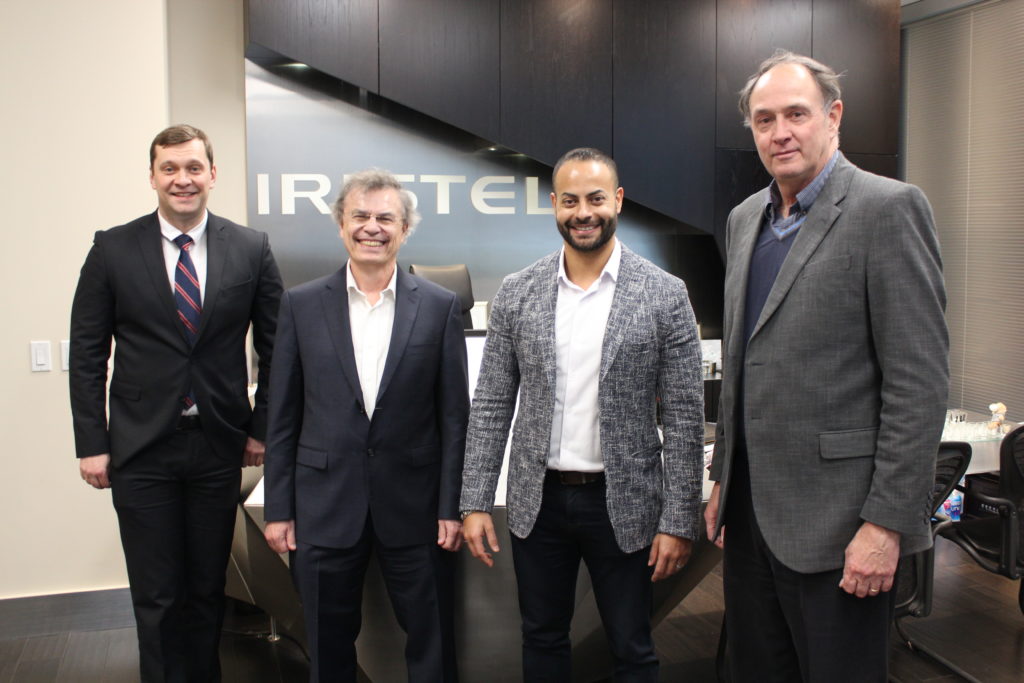A new gift to the Faculty of Science will enhance learning and research opportunities for students studying optical physics at York University by creating awards for graduate and undergraduate students and upgrading a hands-on teaching laboratory for optical physics.
The gift, valued at $470,000, is supported by Iristel Inc, a Canadian telecommunications company founded and led by York University alumnus Samer Bishay. Bishay graduated in 1998 from York’s Space and Communications program, which was established by the Department of Physics and Astronomy and the Department of Computer Science, both being in the Faculty of Science at the time.
“We are deeply grateful to Samer Bishay for this very generous donation, from a company that is pushing the boundaries of the telecommunications industry,” said Professor EJ Janse van Rensburg, former interim dean of science at York University who was involved in securing the gift. “This gift will unlock more opportunities for students in optical physics to pursue learning, research and practical experiences in the field. The Faculty of Science really looks forward to this new partnership with Samer and Iristel.”

“My years at York were both exciting and challenging and what I learned then helped propel me, and ultimately my company, forward,” Bishay said. “These are incredibly exciting times, and opportunities abound. And, York is a terrific university for honing the minds of young people with a passion for science and technology. This is our opportunity to give back.”
One portion of the gift ($100,000) will create an award for graduate students in the field of optical physics. Starting in spring 2020, the Iristel Graduate Award will be granted to two full-time graduate students each year in the field of optical or experimental physics and will support research and related scholarly and creative activities.
Another portion ($120,000) will create an undergraduate scholarship to reward academic performance and lab proficiency and to encourage students in their third or fourth year to pursue a career in optical physics. Recipients will have the opportunity to interview for an internship at Iristel. The Iristel Undergraduate Scholarship will be granted to two full-time students each year, starting in spring 2020.
Finally, $250,000 will be designated to expand, renovate and upgrade the Optical Physics Laboratory in the Petrie Science and Engineering Building. This laboratory was established with support from Optech Inc. (matched by the Faculty of Science) in 2005, under the guidance of Professor A. Kumarakrishnan. Kumarakrishnan and members of his group developed two state-of-the-art laboratory courses on laser spectroscopy and atom trapping, which are used every year. Over 300 upper level undergraduates and incoming graduate students have benefitted from specialized training. Somewhat unusually, the courses have been maintained almost exclusively by graduate students in his group, with Hermina Beica, Alexander Pouliot, and Gehrig Carlse making significant contributions in the recent past. York is the only institution in Canada where undergraduates can construct an atom trap and study the interaction of light with trapped atoms as part of their regular curriculum. The newly renovated Iristel Optical Physics Laboratory will enhance experiential education, research, and other creative activities for students using the lab.
“This incredibly generous gift will allow our department to upgrade and expand our educational program in experimental optical physics and provide our students with laboratory experiences that are unique in Canada,” said Professor Marshall McCall, chair of the Department of Physics and Astronomy. “The scholarships and internship will help to attract students to the field and to stimulate growth in the optical physics community at York.”
